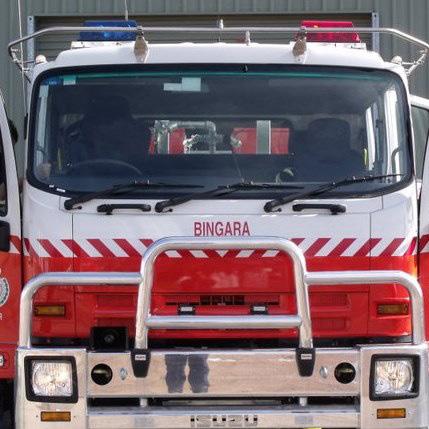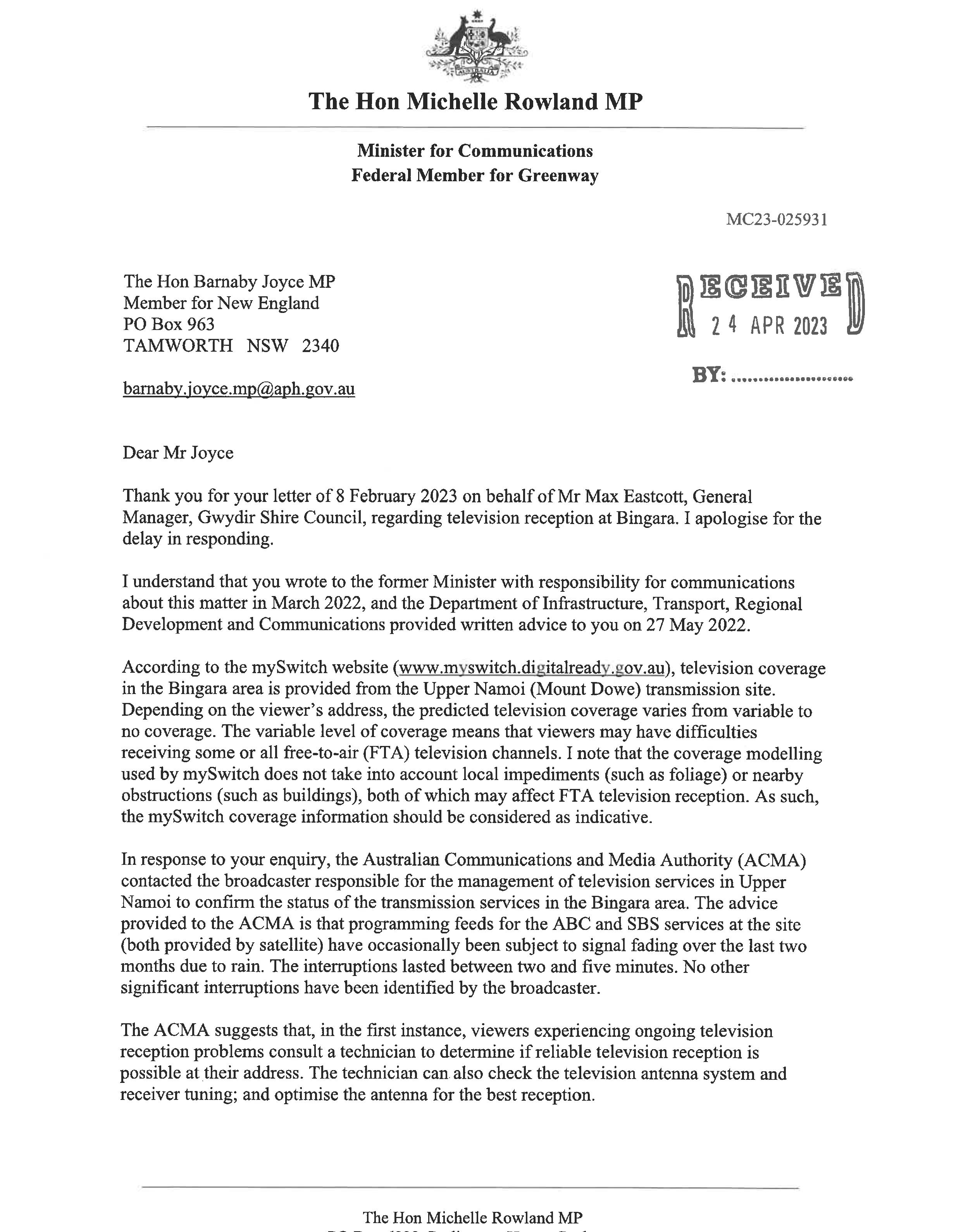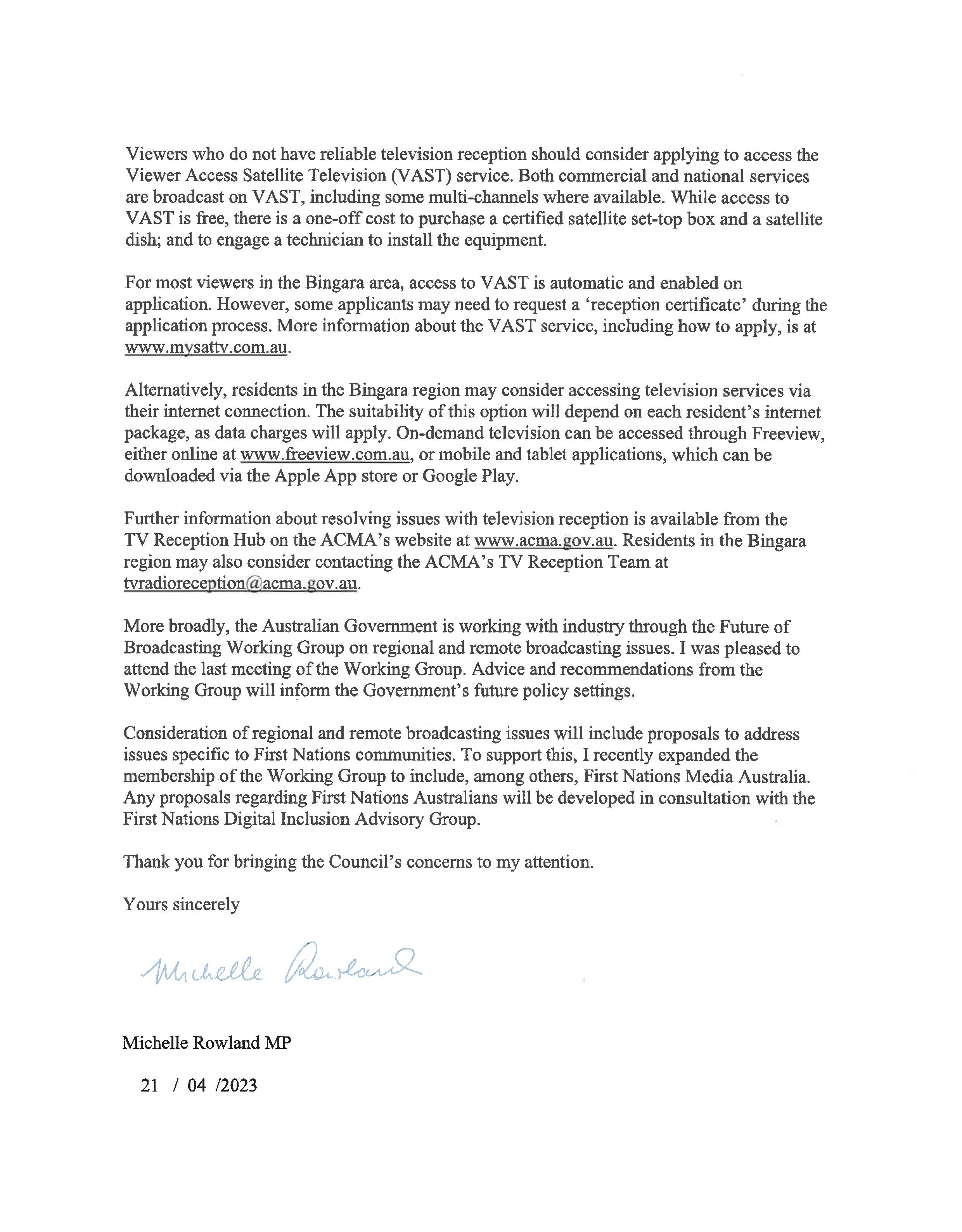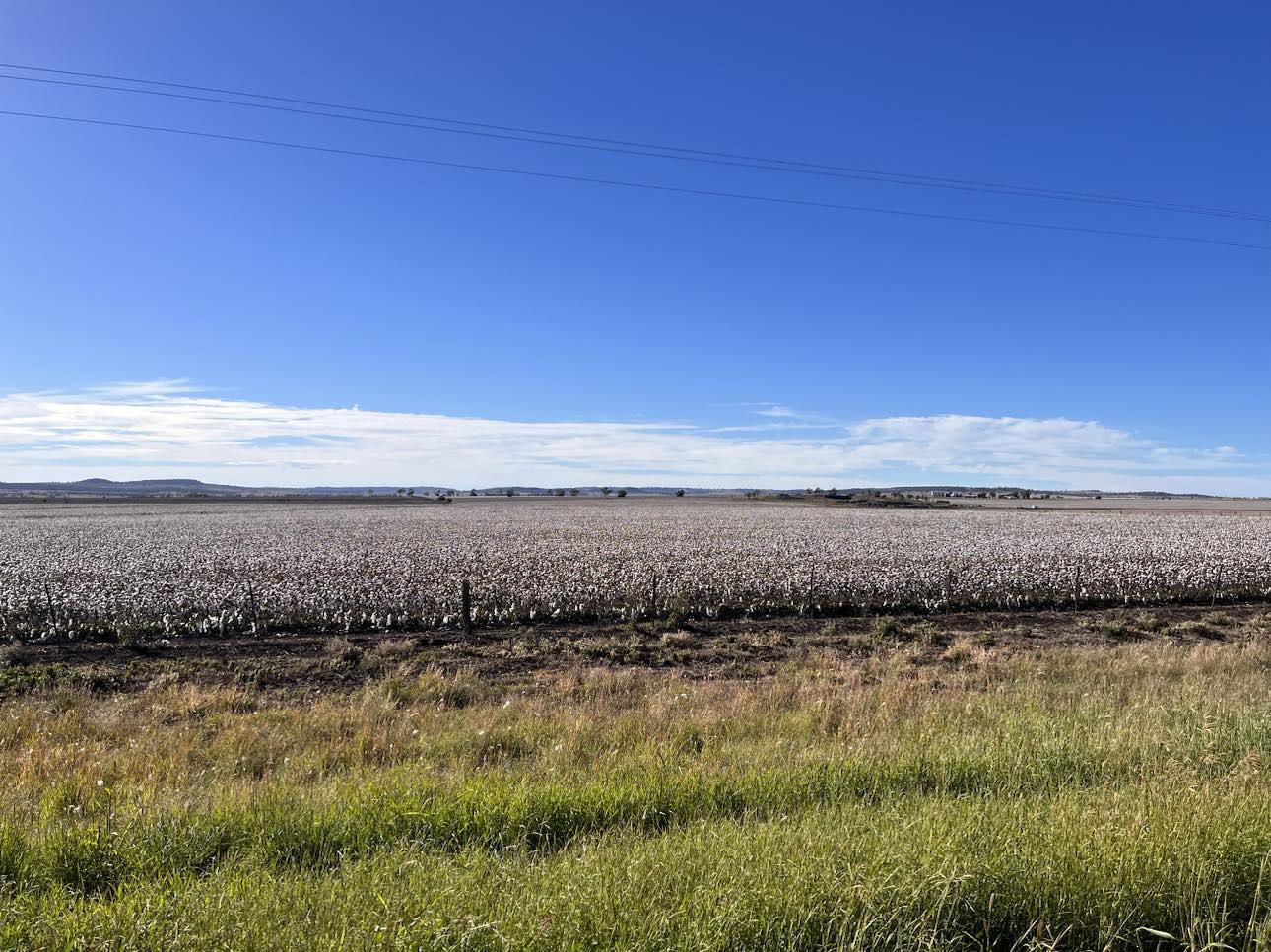
6 minute read
MARSHALL QUESTIONS MINISTER ON FUTURE OF BINGARA FIRE STATION
NORTHERN Tablelands MP Adam Marshall has moved swiftly to secure the future of the Bingara Fire & Rescue NSW station, today putting down a question on the notice paper to the Minister for Emergency Services, during the first formal sitting day of the 58th State Parliament.
In February this year, covert plans by Fire & Rescue NSW to close the Bingara station were blocked by the former Deputy Premier and Emergency Services Minister, but with a change of government and a fresh Minister, Mr Marshall said he wants a “cast iron guarantee” that a closure is still not on the cards.
Advertisement
“I’m seeking a formal and written assurance from the Minister that the new government has no plans to close the Bingara Fire Station,” Mr Marshall said.
“While a move to close it was defeated earlier this year, Gwydir Shire Council and many in the Bingara community are concerned that with a new government and a new Minister, Fire & Rescue NSW might try once more to withdraw its coverage and services.
“Under no circumstances can a closure of the station be allowed.”
Mr Marshall has also asked the Minister when Fire & Rescue NSW will commence a community wide recruitment campaign for retained firefighters to staff the fire station.
“I have heard from a number of locals who in the last six months have approached Fire & Rescue NSW to sign up and train as a retained firefighter to staff the Bingara station, only to be told they are currently not recruiting,” Mr Marshall said.


“The community not only wants the Fire & Rescue NSW pencil pushers and bean counters from Sydney keep their hands off Bingara Fire Station, they want a comprehensive recruitment campaign to begin so we can once more have local firefighters on duty at the station.
“Gwydir Shire Council, the local community and I are in lockstep on this one – we’ll never allow the station to close and services to be withdrawn from the community.
“Bingara may be small but lives out here are just as important as ones in the big city and just as deserving of adequate fire protection.
“The community and I will be watching Fire & Rescue’s actions closely as we now eagerly await the Minister’s formal reply.”
The Minister for Emergency Services now has 35 calendar days respond in writing to the Parliament to Mr Marshall’s question.


Cotton Picking Commencement
Picking has begun in most of Australia’s cotton growing region with positive signs emerging that the flooding and farm damage late last year may not have been as devastating as first feared, aided by dryer and warmer conditions since Christmas.
While the impact varied from state to state and region to region, some farmers were forced to scale back their plantings, particularly in the Southern Valleys and Macquarie where farmers couldn’t get on their paddocks to plant and subsequently missed their window of opportunity.
Cotton Australia CEO Adam Kay said with favourable conditions across most of the 65 plus local government areas growing cotton this year, growers are reassessing yield and quality.
“To appreciate where we are now you first have to acknowledge where we were. Last November every inland river catchment was full or flooded from the Queensland border to Victoria and around 100 active warnings were in place.”
One area impacted by the wet weather is the Southern Valleys where defoliation is just starting after late planting. Wet weather at planting stage resulted in a one-third reduction in crop planted.
In the Macquarie Valley picking has just started north of Warren after farmers reported a 30% crop reduction due to the well-above rain recorded in 2022. The upside is that quality is expected to be good, and above average temperatures in February and March have provided very good boll filling conditions for crops.
In the Gwydir Valley early dryland is being picked and yielding up to seven bales per hectare with around double that for irrigated cotton. The cotton not impacted by spray drift is around the 14 bales per hectare and about 15% is picked at this stage in the Gwydir with 30 % picked in the lower Namoi, 5 % in the Upper Namoi and picking has just started in Walgett and Bourke with yield predictions difficult, particularly in drift impacted areas.
In the MacIntyre Valley, 44,000ha irrigated cotton and 8,000ha dryland has been planted with 15% picked already and activity hitting full capacity this week. While the dryland cotton could have used some late rain, the irrigated is looking very positive. While the gins are not yet operational the cotton being delivered is looking to be high quality.
Picking is in full swing in St George, Dirranbandi & Mungindi with the majority of the early crop to be picked over the next two weeks and later crops a month away from picking. Growers are reporting good yields and quality and while early indications are good, ginners are just starting so there are no results to confirm the optimistic outlook at this stage.
On the Darling Downs growers are up to the defoliation stage of the season mostly and a few have started picking the early planted fields. Due to full storages and full water allocations at the beginning of the season as well as a full soil moisture profile, larger than average areas were planted, around 75% irrigated fields and 25% rain-fed. Gins are predicting they will start full operation this week.
In the Lockyer Valley, 10 growers have planted approximately 1,500 ha of cotton and that’s up from previous years driven by price, crop rotation practices and growing conditions. At Maryborough three growers have planted 500 ha.


In the Central Highlands both gins are operational with the cotton clean but no yield information yet, however early crops are reporting up to 13 bales per ha irrigated. A number of growers are still irrigating and will push through until June picking.
Mr Kay said Cotton Australia was forecasting a crop around 5.2 million bales for 2023. “This will result in around 1.2 million tonnes of fibre and 1.4 million tonnes of cottonseed. Every bale of cotton and every tonne of seed will be sold, given the demand for the Australian grown product. The Murray Darling Basin Authority reports that the major water storages in the basin are at around 90% capacity meaning that the outlook for the next season is positive as well.
“It’s good news for local communities because figures from the Australian Bureau of Statistics (ABS) 2021 Agricultural Census revealed that cotton was grown in 65 local government areas with more than 75% of cotton grower business expenses spent locally,” Mr Kay said.
15% WAGE INCREASE FOR AGED CARE SECTOR
The Fair Work Commission (the Commission) has made a decision to increase minimum wages by 15% for some employees working in aged care.
The Commission is the national workplace tribunal. They set minimum award pay rates and entitlements.
This increase applies to eligible employees covered by the Aged Care Award, Social, Community, Home Care and Disability Services Industry (SCHADS) Award and Nurses Award.
It takes effect from the start of the employee’s first full pay period on or after 30 June 2023. The increase applies to direct care employees working in aged care. Direct care employees are those who work in caring roles in the following award classifications:
- Aged Care Award: personal care workers (PCWs) and recreation/ lifestyle activities officers

- Nurses Award: nursing assistants, enrolled nurses, registered nurses, nurse practitioners working in aged care
- SCHADS Award: home care workers working in aged care.
The 15% increase also applies to the most senior food services employee (levels 4-7):covered by the Aged Care Award working at a particular aged care facility or site.
The increase in minimum pay rates applies to these three awards only. As a general rule, the increase won’t be automatically applied to rates in agreements. However, the minimum pay rate in an agreement can’t be less than the new minimum award rates.
The Commission has been reviewing wages in these three awards as part of a work value case for the aged care sector.
On 4 November 2022, the Commission issued a decision to grant a 15% interim increase in minimum wages for affected aged care employees in the three awards. They confirmed this increase by issuing a final decision on 21 February 2023.
The Commission is still considering some other issues in the work value case. This includes: classification definitions and structures in the 3 awardswages adjustments for some other aged care employees that may be justified on work value grounds.
These initiatives will help relieve workforce pressures and support the sector to increase average care minutes and ensure a nurse is available 24/7..










